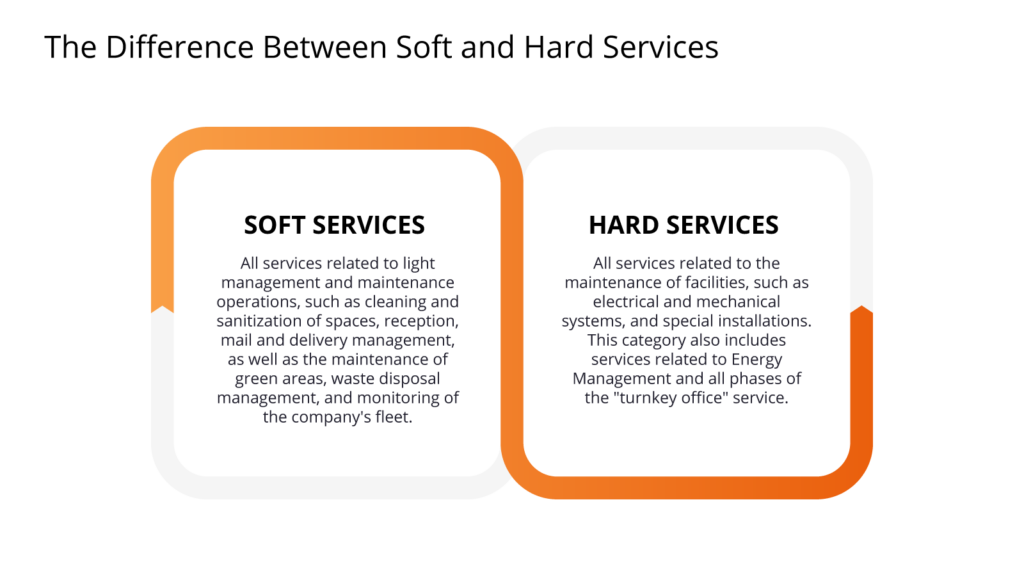Real Estate and Facility Management: how to increase the value of Real Estate assets
How can the value of a property be increased over time? Undoubtedly by taking good care of it and ensuring that it maintains its characteristics unchanged over the years or even progressively improving them. In this sense, the relationship between Real Estate and Facility Management can be seen to be much closer than one might initially imagine.
Real Estate and Facility Management: why are they interrelated?
To understand the reason for this connection, we must first look at the true meaning of the term Real Estate, which indicates those who professionally deal with the management, purchase, sale and development of Real Estate. In particular, the reference is to the most qualified operators – in terms of activities, skills, volumes generated – of the broader Real Estate sector.
Companies in the Real Estate world, in short, own and manage vast Real Estate portfolios, which often include large office buildings in major cities and metropolises. Obviously, through the management and ownership of Real Estate, these operators aim to obtain an economic return – a condition that, in this market, is linked to favourable rents or positive resales.
To achieve these results, Real Estate companies can deploy the most varied financial and investment strategies possible but, in an ecosystem such as Real Estate, it is first and foremost necessary for buildings to function properly and at their best, so that they acquire value and prestige in the eyes of customers and third parties.
The proof comes from the opposite hypothesis: a building with malfunctioning services, out-of-control energy and environmental expenses, and various plant problems, would hardly have a market. It would, on the contrary, in the medium to long term only become a source of expenses and losses for a Real Estate company.
The key role of Facility Management in Real Estate
This is why, in this context, the role of Facility Managers appears crucial. Indeed, as the very definition of Facility Management shows, the objective of these professionals is to manage and coordinate the workspace so that it is functional and “comfortable” for employees and collaborators, thus enabling companies to carry out their core business in the best way possible.
Achieving these results is only possible by ensuring the correct functioning of both the so-called Soft Services (cleaning, reception, mail, gardening, vending machines) and Hard Services, which have more to do with purely tech-oriented aspects.
The latter, in particular, is crucial for the world of Real Estate: maintenance of technological, electrical, mechanical, and civil installations, or the operation of equipment that is fundamental for the usability of large buildings such as lifts and entrance turnstiles.

Efforts to improve efficiency and cut costs
In particular, on the Hard Service front, Facility Management experts ensure that buildings are maintained to the highest standards, mitigating risks, implementing security and reducing costs through streamlined processes and the use of efficient technologies, especially in the energy field.
The installation of photovoltaic panels and other energy-efficient building solutions (so-called Energy Management solutions) can indeed ensure an important contribution to cost containment, which is in turn crucial for the sustainability of Real Estate operators’ investments.
At the same time, all the Soft Services we have mentioned above are useful in creating a high-quality working environment to attract businesses and talent to buildings. This is certainly an intangible factor, but one that can contribute significantly to increasing the value of Real Estate over time.
Real Estate, Facility Management and the BIM factor
A concrete aid to the Facility Manager’s activity of building valorisation comes from the use of BIM (Building Information Modeling) solutions, which allow a digital and three-dimensional representation of the building works and related services, so as to better manage the mass of data, information and documents.
In other words, through the use of BIM software all relevant data of a construction project can be collected, combined and digitally linked. Without going into too much detail, BIM solutions can effectively support Facility Managers to solve typical daily management problems of a building, as they can be identified and solved with a higher degree of precision and accuracy. Thus, ensuring that timely management, which, as we have seen above, undoubtedly favours the business of Real Estate companies.
Nazca‘s approach to Real Estate Management
The close relationship that exists between Real Estate and Facility Management is perfectly familiar to Nazca, an Italian company that has been active in providing this type of service for over twenty years.
In particular, Nazca has among its core competencies Real Estate Management, thus guaranteeing the maintenance, conservation and valorisation of its clients’ Real Estate assets. Also, thanks to dedicated Property and Facility Managers and operational staff, Nazca is able to control aspects such as maintenance, plant engineering, energy management and security, while ensuring the management and valorisation of the properties from an asset, administrative and technical point of view.
That’s not all: Nazca also works to protect the economic aspect, thanks to drafting feasibility and business plans that meet budget savings and rationalisation objectives. In addition, the Nazca Building Management software platform enables the simplification of the technical-economic management of assets and buildings – thanks to the total control of processes – and the reduction of technical and maintenance costs, due to the availability of standardised information that can be shared through virtual data rooms.
 English
English

